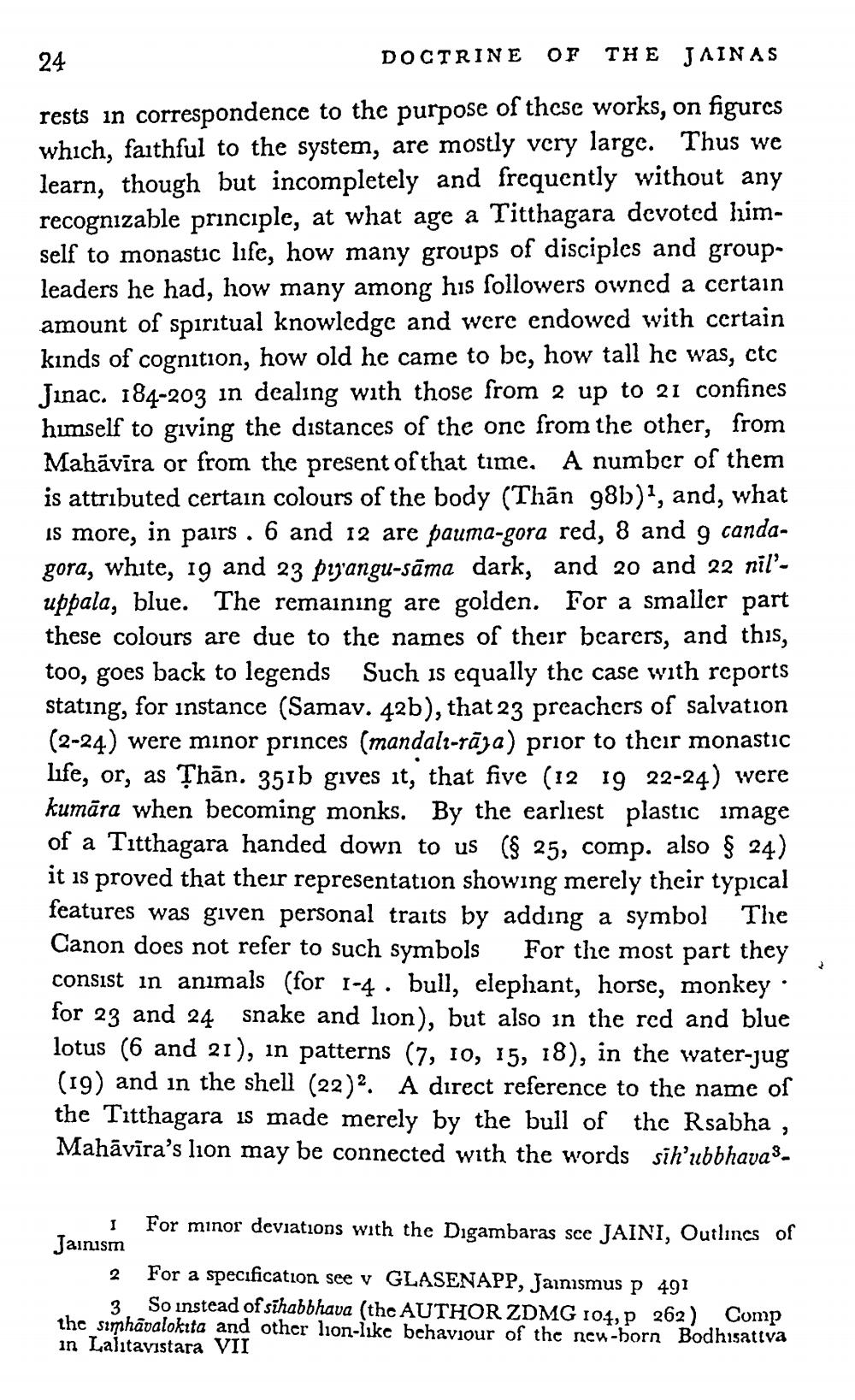________________
24
DOCTRINE OF THE JAINAS rests in correspondence to the purpose of these works, on figures which, faithful to the system, are mostly very large. Thus we learn, though but incompletely and frequently without any recognizable principle, at what age a Titthagara devoted himself to monastic life, how many groups of disciples and groupleaders he had, how many among his followers owned a certain amount of spiritual knowledge and were endowed with certain kinds of cognition, how old he came to be, how tall he was, ctc Jinac. 184-203 in dealing with those from 2 up to 21 confines himself to giving the distances of the one from the other, from Mahāvīra or from the present of that time. A number of them is attributed certain colours of the body (Thân 985), and, what is more, in pairs . 6 and 12 are pauma-gora red, 8 and 9 candagora, white, 19 and 23 pijangu-sāma dark, and 20 and 22 niluppala, blue. The remaining are golden. For a smaller part these colours are due to the names of their bearers, and this, too, goes back to legends Such is equally the case with reports stating, for instance (Samav. 42b), that 23 preachers of salvation (2-24) were minor princes (mandalı-tāja) prior to their monastic life, or, as Thān. 351b gives it, that five (12 19 22-24) were kumāra when becoming monks. By the earliest plastic image of a Titthagara handed down to us ($ 25, comp. also § 24) it is proved that their representation showing merely their typical features was given personal traits by adding a symbol The Canon does not refer to such symbols For the most part they consist in animals (for 1-4. bull, elephant, horse, monkey · for 23 and 24 snake and lion), but also in the red and blue lotus (6 and 21), in patterns (7, 10, 15, 18), in the water-jug (19) and in the shell (22)2. A direct reference to the name of the Titthagara is made merely by the bull of the Rsabha , Mahāvīra's lion may be connected with the words sih’ubbhavas.
I For minor deviations with the Digambaras sce JAINI, Outlines of Jainism
2 For a specification see v GLASENAPP, Jaimsmus P 491
3 So instead of sīhabbhava (the AUTHOR ZDMG 104, p 262) Comp the simhâvalokita and other lion-like behaviour of the neu-horn Bodhisattva in Lalıtayistara VII




